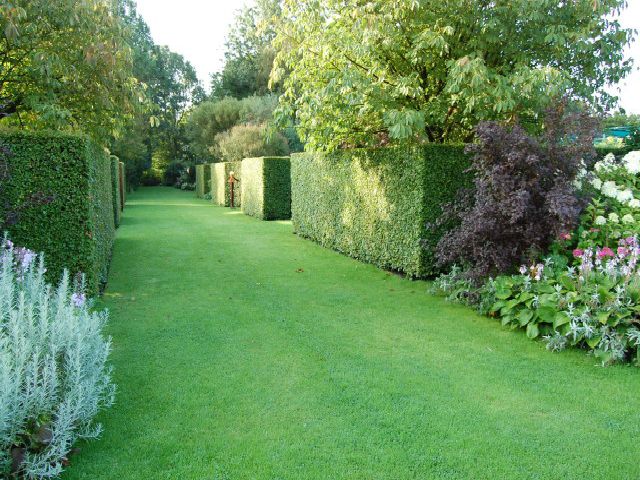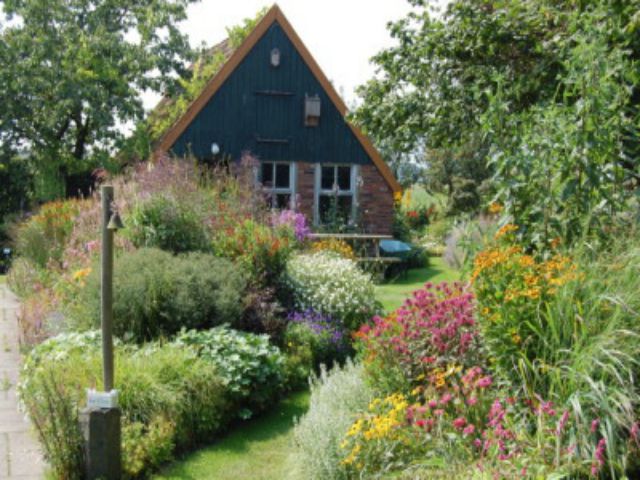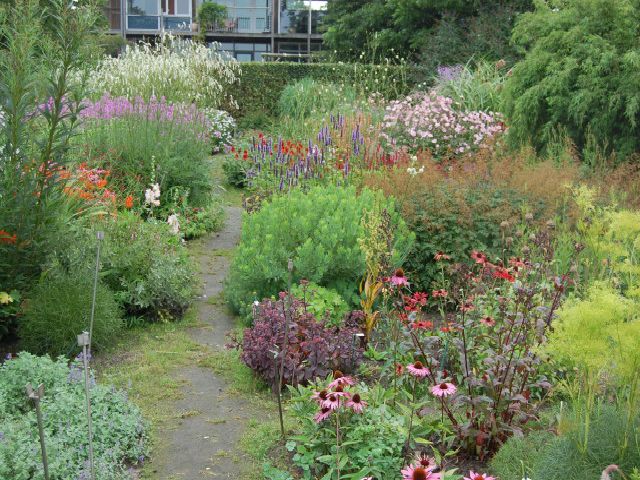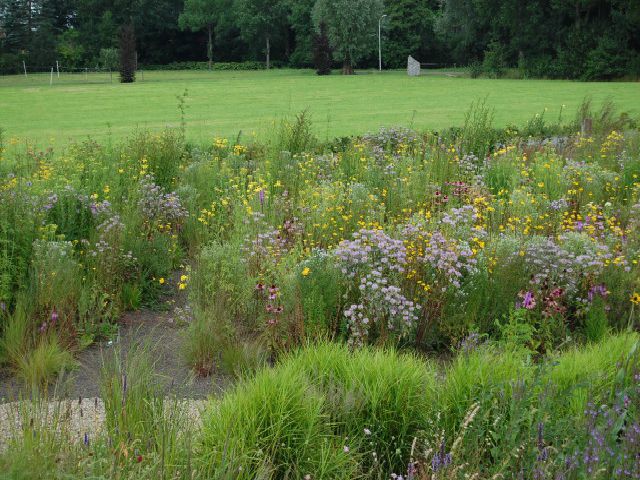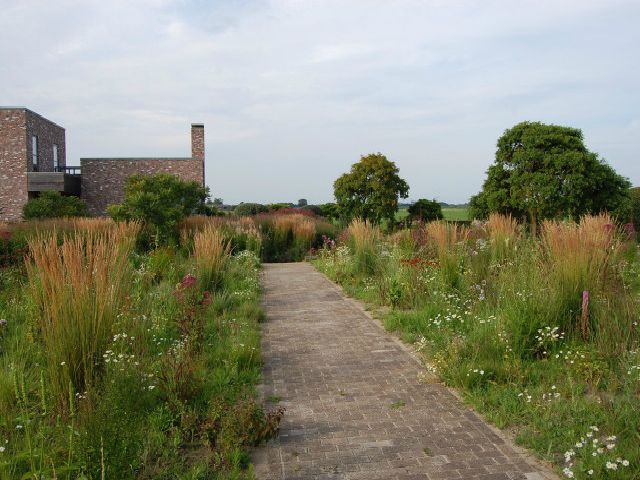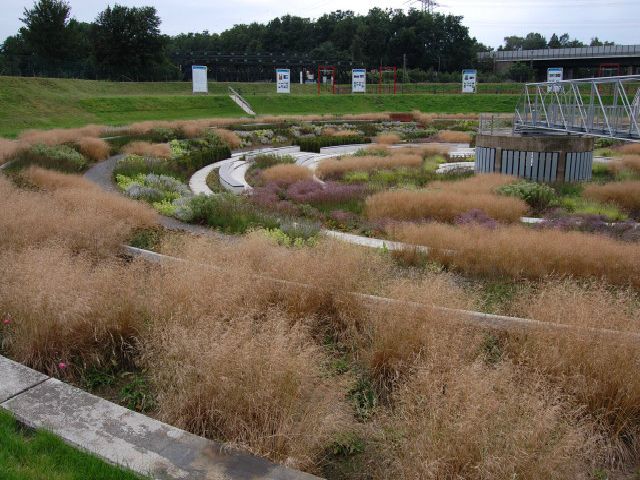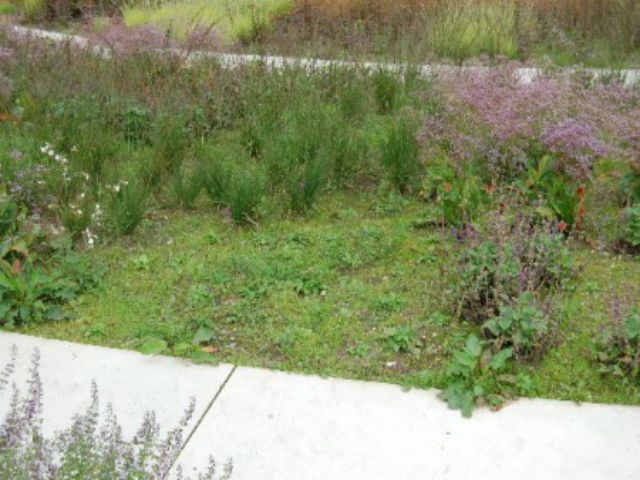**This post was originally published in 2011. With so much interest in Dutch gardening, and with Noel’s incredible perspective and insights, I thought it was a perfect time of year to re-publish.
A trip to Holland earlier a week or two ago. Years ago, a terrifying fifteen years ago in fact, I had an interesting week up to the north, around Groningen, visiting gardens, nurseries and landscapes, with Rob Leopold, now since sadly passed onto the Elysian meadows. He was a generous host, but exhausting, as he talked his home-spun philosophy from the moment he woke up to the moment he went to bed, except when he wasn’t talking plants. The northern part of The Netherlands is in a way the most attractive part, relatively empty, and very agricultural, but in a less obsessively tidy way than along the densely populated, and if not built-on, intensively farmed eastern coast. A lot of folk who want space and can’t afford much of it on that coastal strip have come up here, so this is very much where to find good gardens and nurseries.
My companions for this trip were Zoe Weston, a graduate of the Garden Design course at the University of Falmouth in Cornwall, and Dani Coray, who I’ve known about a year, now doing a Masters in Art and Landscape at the same institution, and who had just won the RHS Young Garden Designer of the Year award at the Tatton Park Flower Show. So, aren’t I good at spotting talent! She’s good at navigating too, as I discovered when we decided to plunge headlong into the suburbs of Antwerp rather than spend hours in a traffic jam.
De Kleine Plantage is a nursery very near the north coast, with amazingly crisp horn beam hedges and a series of garden rooms holding amazingly well-labelled plants – all stock beds for the nursery, but planted up as a decorative garden. Color-themed assemblages of pots line the entrance to the nursery and around the house and the very impressive range of plants in the nursery are arranged by color too. I realize that I had forgotten how cheap plants are in Dutch nurseries – it all helps that they are nearly all in sensible 9cms pots, not the 1 and 2 litre pots that so many British nurseries have gone over to.
The Jacobs nursery in the far east of the country has a particularly fine collection of plants around a charming old cottage and a big central pool, and a well-stocked nursery, lots of unusual plants.
Coen Jansen has long had a reputation as one of THE sources of exciting new plants, he’s a lively character with a nursery where it was very difficult for the three of us to avoid completly filling up the car with plants. Coen has been making selections from Baptisia, Sanguisorba, Phlox and others. We didn’t get to Hans Kramer at Hessenhof but he is also apparently also very good.
This makes me wonder – are the Dutch going to take over as the main sources of perennial innovation in Europe? There was a time, about 20 years ago when the reputation of Dutch nurseries was of getting other people’s good plants (UK and German), mass propagating them, muddling the names and selling them back to us at rock-bottom prices. There was even the accusation that Vine Weevil came from Holland. Of course there is nothing like the squeals of an inefficient industry (in this case the British nursery industry) being faced by one with superior working methods (the Dutch), just as US and UK manufacturing gets replaced by Chinese and Korean. Wise up, the world moves on. Now it looks like there is a whole new sector of innovation in Holland, with dedicated plants men as well as efficient mass-producers. The Brits had better sharpen their act up otherwise we’ll end up with the nursery equivalent of a rust belt.
Another area where Dutch efficiency, and co-operation too, where we might see a future impact is in the production of perennial mixes for modular randomized planting schemes – originally a German idea. Lianne Pot’s prairie garden which includes some of the very striking Michael King perennial mixes are an example (photo above). I was not in fact convinced that these would work long-term, however good they look – whereas the German work with mixed planting is incredibly rigorous and involves many years of trialing.
Meanwhile the old nursery area at the Oudolf garden (above photo) is turning into an interesting prairie-meadow hybrid, with a sown meadow wildflower mix between perennial clumps, so it’ll be interesting to keep an eye on that as it develops.
Finally, some rather bad news from Germany, the country where they usually get things right. Piet Oudolf designed a vast and very imaginative planting scheme for an old water treatment works turned public park – the Berne Park in Bottrop-Ebel in the Ruhr, as part of Essen’s European City of Culture events ( photos below). We went to see it. Disappointing. While from the distance, its strong plan is very evident, close-to, we were horrified by the weeds. Clearly the soil is full of weed seeds, and possibly roots too. I find it astonishing that a project should spend public money on a project where the ground is not properly prepared. When I did work with Bristol City Council contractors on public plantings, they knew the maintenance would be minimal, so they always made sure that the ground was completely weed-free, which at least means everything gets off to a good start and perennials can resist a lot of weed incursion if they don’t have to face it for a few years. Start off full of weeds, and the perennials will never properly establish without serious competition. GAFÖG – the public-private partnership responsible are going to look distinctly foolish in the years to come as the weeds continue to grow. The Germans don’t always get it right!
There’s more about the Dutch trip on my own blog – a visit to the garden of artist Ton ter Linden, as well a post about a remarkable archive of material i have been working on for the last few years – the Andrew Chatto Papers.


